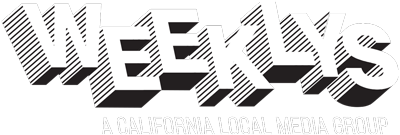Gilroy
– With an average caseload of roughly 650 students each, the
four academic coordinators at Gilroy High School sometimes leave
work feeling frazzled – and perhaps like they need counseling
themselves.
Gilroy – With an average caseload of roughly 650 students each, the four academic coordinators at Gilroy High School sometimes leave work feeling frazzled – and perhaps like they need counseling themselves.
But this year, a number of changes and program restructures have streamlined their work considerably, freeing some much-needed time to develop more personal relationships with students by lessening their caseload.
Jesus Rios, an academic coordinator in his sixth year at GHS, said a new collaboration among the coordinators, the California Student Opportunity and Access Program and the Santa Clara Valley Health and Hospital Systems School-Linked Services has lessened each coordinator’s caseload by about 150 students. Last year, the ratio was about 800 to 1.
It used to be that one full-time coordinator was stationed at the high school’s college and career center, while the other three dealt with academic and personal counseling. Now, staff from Cal-SOAP, a state-sponsored program that educates students about higher education and financial aid, handles counseling at the college and career center, diffusing the number of students among the four academic coordinators.
Additionally, academic coordinators are now primarily responsible only for what their title suggests: academic counseling. Social and personal counseling is provided by the School-Linked Services, a county-sponsored program that assists students with everything from family problems to psycho-social assessments.
At GHS, two counselors are on campus every day, with a mental health specialist and social work intern visiting twice a week.
In past years, areas of interest determined which students met with which coordinator. Students who wanted to pursue art and communications, for example, were all assigned to one counselor, while students interested in science were assigned to another.
This year, the list is divided alphabetically. Generally, students stay with the same academic coordinator throughout their high school career, and it is primarily the students’ responsibility to make appointments.
The burdensome caseload at GHS is about on par with – or even better than – most other high schools in California, which has the worst student-to-counselor ratio in the country at 971 to 1. The U.S. Department of Education, along with a number of educational groups, recommends a ratio of 250 to 1.
At Prospect High School in San Jose, two counselors split a total caseload of 1,400 students, which might dissuade some students from even bothering to make the effort to see a counselor.
“There’s a huge impact on students,” said Kris Munro, activities director at Prospect High, who, as a past principal and assistant principal in the Santa Cruz Unified School District, said she’s worked closely with school counselors. “Unless a counselor knows the student well and knows their work well, they can’t give them anything but generalizations and guidelines.”
Counseling is among the areas usually hit hardest and hit first in light of budget cuts, Munro said. Generally, salaries for counselors come from school districts’ general funds, which districts try to conserve as much as possible.
Amanda Gomez and Crystal Espino, sophomores at GHS, said they see their coordinators and counselors about three times a week. In their experience, not knowing names is not a problem.
“They really take the time to get to know you individually. They know your name and your situation,” said Espino, who last year considered taking independent study classes because of personal problems. Her counselor convinced her to continue coming to school each day so she could be around her friends, and Espino said she’s happy now and doing well.
“They listen to our problems and help us out,” Gomez said. “It’s kind of like they’re not really counselors, but more like our friends.”
Even so, the two high schoolers said they know other students who rarely make appointments with coordinators or counselors for a number of reasons.
GHS senior Justine Garcia said she sees a coordinator about twice a month just to make sure she’s fulfilling the credits required to graduate. Otherwise, she said, she usually can keep track of everything else on her own.
Sometimes, the need for an inspirational pick-me-up is the reason students visit counselors. Sitting inside Rios’ office is Mr. Rios’ Motivational Thought Box, a small cardboard box covered in yellow and blue wrapping paper with an opening on top. Inside are dozens pieces of candy, individually hugged by a small piece of paper inscribed with an inspirational saying. A message hand-picked Monday read, “Don’t let your problems get you down. Pick them up and turn them around.”
Gomez and Espino visit Rios and his thought box when they need encouragement. Their school binders are covered with the taped-on sayings.
“We come to him when we need inspiration,” Gomez said. “And it helps.”













